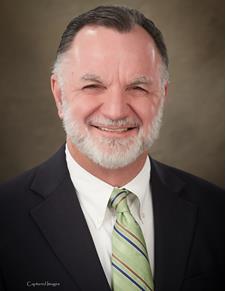Over the course of my 47 years of adulthood, it seems that more and more people and institutions make important decisions based on feelings and assumptions. Evidence can be found in the nature of our news media; it appears that they are constructed to pray on the emotions and gullibility of Americans. Knowing this, my response is to dig harder and deeper for data and facts upon which I can hang my hat to make responsible decisions as a family man, businessman, and community volunteer. It makes no sense for me to make important decisions without knowing what it is real.
Accordingly, here are some facts about Kansas, Southeast Kansas, and Bourbon County you may not have known:
Politics: In 2018, which is the last state data available, Kansas had 1.84 million registered voters, with 25% registered Democrats, 1% Libertarians, 44% Republicans, and 30% unaffiliated. Bourbon County breaks out like this: out of 11,992 registered voters, 23% Democrat, 1% Libertarian, 43% Republican and 33% are unaffiliated. Both major parties lose a few percentage points to the independent minded Bourbon County voter.
Of the 105 Kansas counties, only two are majority Democrat: Wyandotte and Douglas. With a high number of unaffiliated voters, one can see why it is the perception of the candidate, not the political party, which often determines the holders of statewide office.
Sales Tax: I have frequently heard people bark at the high sales tax rate, particularly in Fort Scott, not without some justification. In the two approved Community Improvement Districts, one can pay up to a 10.4% tax rate. That pales in comparison to sales tax of 11% or above in various other Kansas jurisdictions, including Hiawatha, Ottawa, Junction City, Overland Park, Cunningham, McPherson, Leavenworth, Chanute, Salina, Goodland, Hugoton, Liberal, Topeka, and Kansas City.
Children: The statewide infant mortality rate (number of babies per thousand births who die within one year) from 2015 to 2019 was 5.9, compared to 5.6 in Bourbon County. Many Kansas counties had a zero death rate, including Woodson County in Southeast Kansas. The highest rate was experienced by Comanche County with an astounding 24.7 death rate. The highest in Southeast Kansas was Allen County at 8.4. Our wealthiest county, Johnson, had a rate of 4.0.
Few logistics make a bigger difference in the education of our children than pupil/teacher ratio. In Bourbon County, our schools lowered that ratio from 13.4 in 2020 to 12.9 in 2021. We compare favorably to the statewide average of 14.7 and every county around us except Linn, which recorded a ratio of 12.3. Mighty Johnson County reported a ratio of 16.2, one of the highest in the state.
In my search for who we are in Bourbon County and what is real, I have found that we compare favorably in most statistical categories. There is no reason for us to carry around an inferiority complex or feel insecure around outsiders. We can relax and welcome visitors and promote our county every chance we get. After all, you and your neighbors are the best assets we possess.

Good information to have. I wonder, genuinely, how the pupil/teacher ratio compares to the same cross-sections when you factor in the area poverty rate and rate of learning disability? It may not change the value of the comparison, but always important to note, too, that comparative analysis such as that contained in your article can easily be pulled without context and paint an entirely different picture than reality. Not meaning to suggest that you’ve done that here, just alluding to how easy it is for media and other mediums to sensationalize stories and throw feelings to an issue, even by producing data.
Good points, Jeffrey. Notice that I drew few conclusions, just presenting some data that shows we are not coloring TOO far outside the lines. No matter what the demographic, lower pupil/teacher ratio is better.
The ratio is important, but the quality of the teachers is too. As well as teacher “contact”. In smaller communities there is possibly more contact with students and parents than in larger communities.
I do know that I appreciate all my teachers much more now. I’m always hopeful teachers realize that many students end up feeling this way.